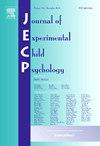Measuring adverse childhood experiences by interviewing children at 9 and 10 years of age: Prevalence, concordance with mother-reports, posttraumatic stress disorder symptoms, and subjective experience of being asked about adverse childhood experiences in FinnBrain Birth cohort study
IF 1.8
2区 心理学
Q3 PSYCHOLOGY, DEVELOPMENTAL
引用次数: 0
Abstract
How children experience the screening of adverse childhood experiences (ACEs) is little studied. Moreover, the similarity between parental and child reports is unknown. We interviewed 9-year-olds (a subsample of the FinnBrain Birth Cohort Study; N = 344) by using the Pediatric ACEs and Related Life Events Screener questionnaire (PEARLS; covering 10 traditional ACEs and 7 expanded items). Furthermore, we asked about the subjective harm caused by ACEs, posttraumatic stress disorder (PTSD) symptoms, and how the children experienced the interview. The mothers (N = 348) filled out the PEARLS youth questionnaire that provided a parental report on ACEs. In total, 39.2% of children self-reported zero ACEs, and the corresponding percentage for mother-reports was 30.2%. In addition, 7.8% of children reported having been exposed to ≥ 4 (of 17 possible) ACEs, which is an often-used cutoff score for adverse health outcomes. The corresponding percentage for mother-reports was higher at 14.7%. There was low concordance between mother- and child reports in cases where ACEs did happen 4.9% of children with at least 1 ACE reported PTSD symptoms. In general, 1.7% of children felt that it was difficult to answer the questions, whereas 78.6% felt that it was easy. Negative feelings (e.g., anxiety, depression) related to the interview were reported by 0.9% to 1.4% of the children. In addition, 2% reported only negative feelings, whereas 80% reported only positive feelings. The prevalence of ACEs at 9 and 10 years of age in the FinnBrain Birth Cohort was comparable to that in many retrospective adult studies in European general populations. The prevalence of PTSD symptoms was low and was not clearly linked to the number of self-reported ACEs. The observation that most children found the interview to be easy, neutral, or positive is encouraging, whereas the uneasiness of few children at the interview needs to be acknowledged.
通过访谈9岁和10岁儿童来测量童年不良经历:芬兰脑出生队列研究中,患病率、与母亲报告的一致性、创伤后应激障碍症状和被问及童年不良经历的主观体验
儿童如何经历不良童年经历筛查(ace)的研究很少。此外,父母和孩子的报告之间的相似性是未知的。我们采访了9岁的儿童(FinnBrain出生队列研究的一个子样本;N = 344),使用儿童ace和相关生活事件筛选问卷(PEARLS;包括10个传统ace和7个扩展项目)。此外,我们还询问了ace造成的主观伤害、创伤后应激障碍(PTSD)症状以及儿童对访谈的感受。这些母亲(N = 348)填写了珍珠青少年调查问卷,该问卷提供了父母对ace的报告。总体而言,39.2%的孩子自我报告零a,而母亲报告的相应比例为30.2%。此外,7.8%的儿童报告暴露于≥4次(17种可能)不良反应,这是不良健康结果的常用截止评分。母亲报告的相应比例更高,为14.7%。在发生ACE的病例中,母亲和孩子的报告之间的一致性很低,至少有一次ACE的儿童中有4.9%报告了PTSD症状。总的来说,1.7%的孩子认为问题很难回答,而78.6%的孩子认为问题很容易回答。0.9%至1.4%的儿童报告了与访谈相关的负面情绪(如焦虑、抑郁)。此外,2%的人只报告消极的感觉,而80%的人只报告积极的感觉。在FinnBrain出生队列中,9岁和10岁的ace患病率与许多欧洲普通人群的回顾性成人研究相当。PTSD症状的患病率很低,与自我报告的ace数量没有明确的联系。观察到大多数孩子发现面试是容易的,中立的,或积极的,这是令人鼓舞的,然而,少数孩子在面试中感到不安需要承认。
本文章由计算机程序翻译,如有差异,请以英文原文为准。
求助全文
约1分钟内获得全文
求助全文
来源期刊

Journal of Experimental Child Psychology
Multiple-
CiteScore
4.50
自引率
7.70%
发文量
190
期刊介绍:
The Journal of Experimental Child Psychology is an excellent source of information concerning all aspects of the development of children. It includes empirical psychological research on cognitive, social/emotional, and physical development. In addition, the journal periodically publishes Special Topic issues.
 求助内容:
求助内容: 应助结果提醒方式:
应助结果提醒方式:


